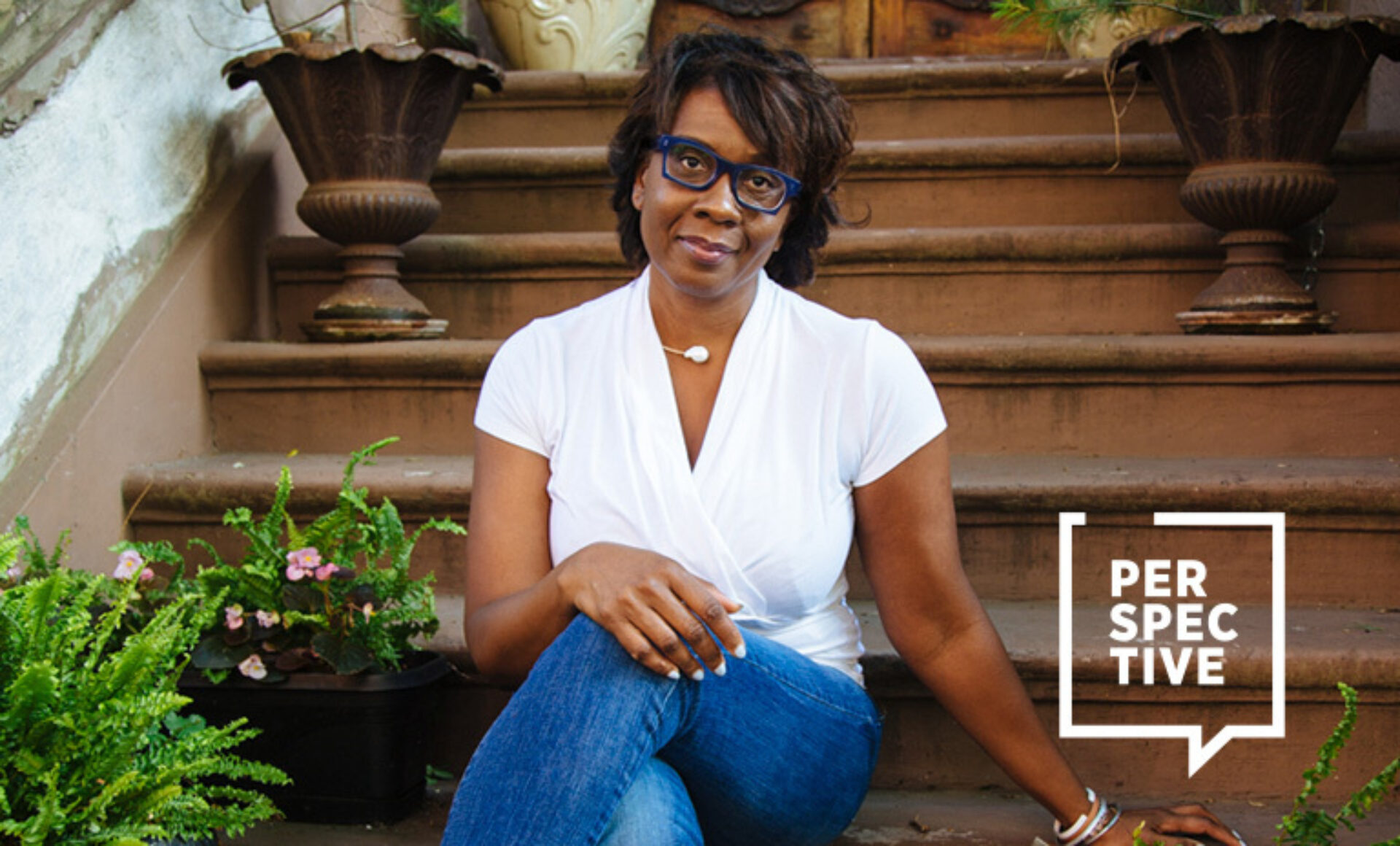(Above: GAP Partners Heidi Davis (left) and Kelly Westwood (right) and GAP participants. Photo by Gensler/Gillian Fry)
Imagine what we can create with no parameters—and who can be included. Future-forward and sustainable design isn’t possible without a more diverse workforce, and for one firm, the answer is addressing access: Who doesn’t have access to a career in our industry, and why not? In the architecture and design industries (and many others), there are several barriers to entry—but two of the biggest are lack of exposure to design-related careers, and unequal access to a college degree.
Programs like IIDA’s Design Your World endeavor to address exposure, meeting high school students where they are and immersing them in a summer program that introduces them to what a career in the design industry can look like.
This past summer, when IIDA’s Design Your World Chicago students visited Gensler’s Chicago office, they learned about two opportunities available to them through the firm—the ACE (Architecture, Construction, and Engineering) Mentor Program of America, and the Gensler Apprenticeship Program (GAP). Each program offers opportunities to individuals who want to pursue a career in the industry. While ACE is geared towards high school students, GAP is for high school graduates of all ages and aims to reach those from communities that are underrepresented in architecture and design.
“Showing students a career path that may not have been their first inclination opens new opportunities for them and helps to create a new pipeline for industry talent,” says Will Mason, a creative technologist at Gensler who also serves as a mentor and an ACE Mentorship Program team lead. Any architecture, construction, or engineering firm can participate in the ACE mentorship program, with the goal of attracting high school students and encouraging them to pursue education, trade programs or career paths in the industry.
GAP is a paid apprenticeship program, offering an alternative path to a design career that doesn’t require college. Architect Kelly Westwood, AIA, NOMA, founder and director of GAP, says that "the prominent means to prepare for a career in architecture or interior design higher education isn’t accessible to all.”

Gensler/Gillian Fry
A national program, ACE provides students with real-world work experiences and exposure to the architecture, construction, and engineering landscape. Participants have access to internships, scholarships, and design-build camps. Mentors show students what their day-to-day job looks like, and can answer questions and provide guidance on everything from college, careers, professional development, and much more. These sometimes decades-long bonds not only benefit the student mentees, but also the mentors.
“Mentors who actively support this program have a hand in shaping the next generation of designers,” explains Mason. “They gain professional networking experience working with others from around the industry, and for many [professionals], ACE is the first time they teach in their careers.” When describing the benefits of supporting such a program, Mason acknowledges that there’s a “clear benefit as we strive towards a more inclusive, diverse, and talented workforce that reflects the communities we serve.”
“Firms benefit by fostering a culture of community engagement and mentorship,” he continues. “Ensuring that best-practice design and attention to community, culture, and society are passed on to the next wave of professionals is just as (if not more) important than the work we do every day.”
We, as an industry, need to be creating new opportunities.
Kelly Westwood, founder and director of GAP
GAP has a focus on experiential-based learning to train aspiring architects and designers for whom formal design education is not accessible. The framework aligns with NCARB’s Architectural Experience Program (AXP) goals ensuring that participants receive a relevant and comprehensive education that will allow for participants to become licensed architects. “GAP takes advanced degrees out of the equation, leveling the playing field and reclaiming lost potential,” Westwood says. By providing “individuals who are passionate about design, hardworking, eager to learn, and hopeful for their future” an alternate pipeline, she adds, Gensler is “empowering individuals that may not have another path into the industry.”
GAP began as a response to an innovation challenge within the firm in 2017, and has grown into an impactful program that has inspired other firms to consider developing something similar. While there are many other types of programs that support a less-homogenous workforce, “recruitment and scholarships alone are not enough to make a material change in our industry.” Westwood explains. “We, as an industry, need to be creating new opportunities.”
As with any apprenticeship or mentorship program, participants don’t just benefit from the education or hands-on work, they also make connections that can help guide them as they begin to build a career. This is particularly beneficial to young people who don’t have many adults they can ask about applying to or thriving at college, or even further how to network, build their portfolio, or successfully interview for a job.

Gensler/Gillian Fry
Some of the Level 1 GAP participants have stayed at Gensler to move on to the second level of apprenticeship, contributing to the to the firm and the industry.
“By cultivating a diverse pipeline of future design leaders, GAP reflects [Gensler’s] dedication to fostering an inclusive industry that mirrors our communities and strengthens the future of our industry,” Westwood says. Mason asserts, “I’ll keep coming back to work with ACE students as long as they’ll have me.”







